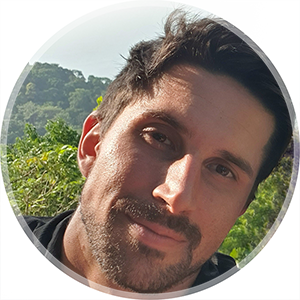Primitive Risk Analysis
The Drive podcast
I recently listened to Peter Attia’s interview with Ned David on Attia’s podcast The Drive. Petter Attia is a physician that focuses on longevity and health and has a fantastic podcast where he explores these subjects in depth. I will be honest: most of the content is so far over my head that I can’t even pretend to grasp what’s being discussed. But sometimes I enjoy listening to people much smarter than I talk intelligently about whatever subject interests them. It’s humbling.
The main subject of the episode is the science of cellular senescence (bear with me while I try to translate this to English) and how it can be used to slow down aging in humans. If you have a few hours and a couple Ph. Ds under your belt you can check out the Wikipedia article on cellular senescence. Otherwise we can just conclude that senescent cells protect against cancer, but that once their job is done they keep hanging around and start to build up over time, Removing these “spent” cells seems to have a positive impact in slowing down aging. I might be completely wrong. Let me know.
Simple, primitive, but effective risk analysis
What really caught my interest in the episode was David’s approach to risk analysis for his scientific ventures. This is my interpretation of the approach.
His lead words seem to be: Simplicity, primitivity, discipline.
Simplicity in idea
So you have a bold idea. The questions is: Should you act on it?
David says he condenses it down to a simple, beautiful idea. I interpret this as the idea being beautiful exactly because of its simplicity, maybe alluding to the fact that if you can’t explain or picture it in a simple manner it might not be clear enough in your own mind yet.
You then imagine what this idea looks like at the end, when it’s realized.
Primitivity in risk identification
The next step is to define what the existential risks to that end vision is. Write them down in the most primitive way you can. David’s example from his current company is:
- Senescent cells don’t contribute to natural aging (technology)
- Senescent don’t cause a specific disease of aging (market/regulatory risk)
- You can never find a particular molecule to eliminate (technology)
- Eliminating them might be unsafe (technology)
The type of risk in parenthesis is Attia’s comment regarding each one of them. Three technology risks, one market risk.
Zooming out, David recommends to distill the next 4-5 years of your professional life down to 2-4 risks. It seems to me this would apply not just for a specific business venture, but also for a career path you’re planning or similar.
Discipline in implementation
You then build work plans (also referred to as “de-risking plans”) that remove these risks, or at least identify and find ways to mitigate them. The plan for each risk will have an estimated timeline and budget attached to it.
Coming back to simplicity, David recommends that in any setting where you have a problem or a technological thing to solve:
Be explicit about the failure modes.
This is a kind of time-protector, as it will tell you what to look for in terms of failure, and let you switch over to another endevor when it becomes clear that this is not working. It makes the go/no-go decision easier to make. I interpret it as:
- Clearly state what sub-parts needs to work for this project to work
- When any of these critical parts are failing and have not been fixed inside a beforehand stated timeline, accept failure and move on to another project.
Another risk mitigation is recommended by David in relation to academia: a portfolio approach. This would apply to business as well. A portfolio approach means having 2-3 projects running concurrently, knowing that some will fail, but if at least 1 of those pan out, it’s a good outcome and you can continue perfecting that one promising project.
That is my take on the risk analysis methods Ned David and Peter Attia discussed in the episode. I recommend you listen for yourself, as you might draw other conclusions from it, and also the main subject of anti-aging is fascinating.
Thanks for reading.


